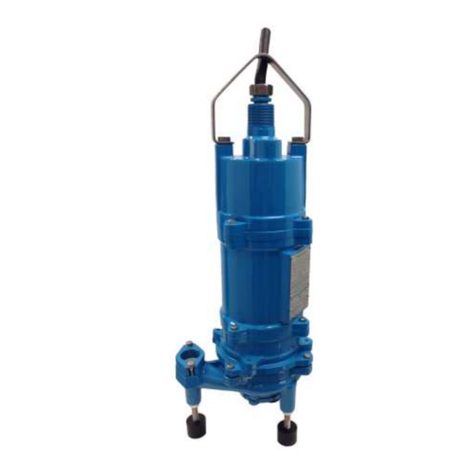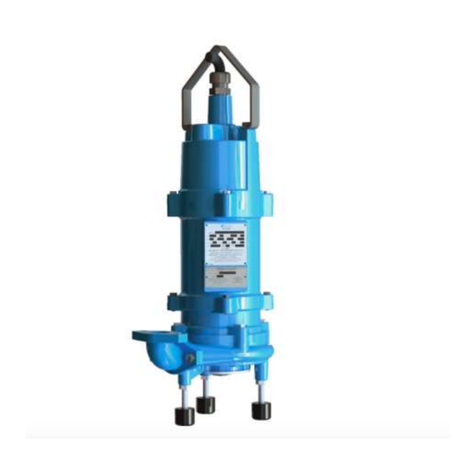
4
1. Concrete Basin(s):
Pour one or two concrete systems (one for pumps and control, etc. and one for valves, if required) or obtain
precast concrete rings. A 45° degree slope may be poured around the inside perimeter of the basin at the
bottom to prevent solids buildup providing the slope does not interfere with the discharge elbow and pump
locations. Before beginning the installation, refer to the individual pump dimension drawings and pump/rail
drawings for minimum dimensions required.
Follow the Installation Data taking into account the location of the discharge pipe, inlet pipe, controls, vent
pipe, and the anchoring requirements of the discharge elbow(s). (All of the above concrete work by others.)
2. Discharge Elbow Installations:
See Pump/rail dimension drawings for the proper location of the discharge elbow on the basin bottom. Either
cast anchor bolts into basin bottom protruding 2” (minimum) from basin floor with lockwashers and nuts
securing, or drill holes for expansion lag screws to secure elbow to basin bottom. Each elbow requires four
anchors (all furnished by others). Each elbow must be level. Length of anchors embedded in concrete varies
with materials used, but must be sufficient to withstand the weight, torque, and thrust loads imposed by the
pump.
3. Discharge Piping (all Supplied by Others):
Install vertical discharge piping modules to elbow using bolts, nuts, lockwashers and gasket. Install remainder
of the sump discharge piping. This typically includes a vertical run of piping appropriately sized and
configured to mate with the vertical discharge piping, a ninety degree elbow, and a horizontal run of piping
approximately sized and configured to mate with the valve box or main piping. Install horizontal run extending
through the wall of basin. Secure vertical run to the vertical discharge piping using the appropriate method
(i.e. flange, weld, gasketed collar coupling) and grout all piping extending through basin walls.
NOTE: If using flanged connections be certain that adequate clearance is provided throughout for
installations of bolts, nuts, lockwashers, and gaskets.
If total run of vertical piping exceeds twelve (16) feet, install a piping brace at the approximate midpoint of the
piping. Secure brace (i.e., U-bolt with angle iron strap and angle iron extensions) to both piping and wall of
basin.
4. Basin Cover(s):
The basin cover for the sump and valve box can either be poured concrete or precast. If Keen Pump-supplied
door and frame assemblies are used, locate the concrete openings with respect to the discharge elbow
mounting studs as shown in the installation drawing data. If the covers are poured, place the door and frame
assembly inside the concrete form and position per installation drawing data. If precast covers are used,
remove anchor straps form frame before installing into covers. If valves are to be inside the wet well, provide
access ways as required for the piping and valves. Access ways must be covered and secured with tamper-
proof hardware (by others).
5. Guide Rail Installation:
Install the guide rails by attaching the lower end of the guide rail to the plugs on the topside of the discharge
elbow. At the top of the guide rails, plumb and then fasten the guide rail to the door and frame assembly via
the upper guide rail bracket.
6. Intermediate Guide Rail Bracing:
Sump depth of 16’ 0” and greater require intermediate guide rail bracing. The braces mount on the vertical
discharge pipes with U-bolts which are sized according to the discharge pipe size. The number of guide rail
braces required is as follows:



























